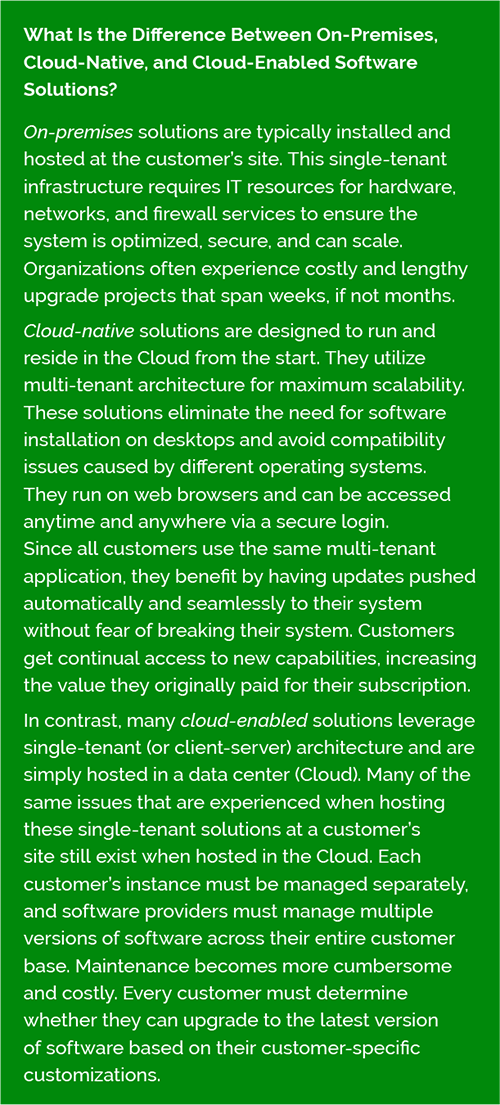Traditionally, NPD has been centered around an in-house team of engineers that work independently to develop, test, and fine-tune the product design. In many instances, quality assurance, procurement, manufacturing, and other downstream players are not formally brought into the loop until the early production phase. This informal process works well if everyone is under the same roof and can readily review the design and exchange ideas. However, as more manufacturing steps are outsourced and teams become dispersed, the system breaks down. Eventually, companies encounter design for manufacturability (DFM) issues which prevent them from meeting their quality and cost targets, or even worse, getting products to market ahead of the competition.
Throughout the NPD process, teams rely on a myriad of tools to manage product and quality information. Engineers typically start with mechanical CAD (mCAD), electrical design automation (EDA), and product data management (PDM) software to create and maintain their design files. Because these systems are intended for engineering workgroups, it is difficult for downstream product teams and external partners to provide input early in the design cycle.
Point software solutions, spreadsheets, and even paper are often used to develop and share critical records such as bills of materials (BOMs), design history files (DHFs), and standard operating procedures (SOPs). These records are ultimately saved to local hard drives, one or more shared drives, and/or physical storage sites.
Getting today’s distributed product team members to review, revise, approve, and implement changes can be challenging with these siloed, disconnected systems. It is difficult to identify the latest revision when information is stored and maintained in multiple locations. This gives way to engineering change orders with prolonged review cycles and mistakes which result in production errors and delays.
Tracking and maintaining quality documentation and processes is also labor-intensive and unreliable with this siloed approach. Team members must manually link quality information to the product record to keep everything in sync. Otherwise, there is no traceability or visibility into nonconformities that impact the final product. This could lead to the reuse of troublesome parts and subassemblies. In the case of highly regulated companies, it could also create compliance risks.
Lastly, these traditional NPD practices do not enable real-time collaboration across dispersed teams, slowing down the response to design errors, part shortages, and other issues that impact product launch schedules.
While many companies recognize the advantages of adopting a unified enterprise solution to manage NPD, some fall into the trap of investing in an on-premises platform. Oftentimes, businesses overlook hardware, software, firewalls, and other infrastructure required to use and access the system securely. Additionally, they lack the IT resources to implement robust security measures that safeguard sensitive intellectual property (IP).
Companies incur significant expenses from custom coding and upgrades in their effort to tailor the system to meet their unique requirements. As a result, they often get “rev-locked” on older versions of the software which prevents them from fully leveraging the system’s enhancements (part of their annual support expense which typically runs up to 25% of the software costs). Remote employees often experience difficulties accessing on-premises systems due to VPN connectivity or firewall issues. Ultimately, companies grapple with exorbitant maintenance costs, frequent downtime, limited functionality, and security vulnerabilities.
These issues decrease productivity, hindering organizations from reaching their product development milestones. Furthermore, IP and compliance risks loom, especially for those companies regulated by export controls and cybersecurity regulations (e.g., ITAR, EAR, CMMC).
 To successfully coordinate the efforts of a globally dispersed team and accelerate NPD, manufacturers must drive more efficient, agile, and connected processes. By leveraging turnkey cloud-native product lifecycle management (PLM) and quality management system (QMS) solutions, internal teams and external partners can stay connected and better execute engineering changes, DFM reviews, regulatory audits, and other critical product development activities.
To successfully coordinate the efforts of a globally dispersed team and accelerate NPD, manufacturers must drive more efficient, agile, and connected processes. By leveraging turnkey cloud-native product lifecycle management (PLM) and quality management system (QMS) solutions, internal teams and external partners can stay connected and better execute engineering changes, DFM reviews, regulatory audits, and other critical product development activities.
Cloud-native PLM and QMS solutions aggregate mechanical, electrical, and software designs as well as all the associated product and quality processes into a single source of truth that can be accessed anytime and anywhere by global product teams. This immediate, real-time access allows internal teams and external supply chain partners to efficiently exchange information, resulting in improved component forecasting, shorter lead times, and shorter production cycles. With quality processes linked directly to the product record, teams can also speed the identification and resolution of issues and establish a solid closed-loop CAPA process to minimize compliance risks and enhance the customer experience.
Centralized management of the product BOM and automated change processes provides greater control over product information not realized with legacy practices and ensures that everyone always has access to current and accurate information. Automated revision controls are applied to BOMs, documents, and parts to drive better traceability throughout the entire product development process. In addition, project tasks are electronically tracked and linked to the product record so that teams can stay on course while meeting key deliverables. Because teams are not burdened with manual, time-consuming processes and are accessing the same information, everyone can stay aligned and focused on getting high-quality products to market faster.

Arena scales with our growing business and affords us the opportunity to effectively meet the market demand for smart, customized energy solutions. We like the holistic approach with Arena, which integrates mechanical, electrical, and software design information in a single system for a centralized view of our product record.
—Andreas Sedlmayr, Co-Founder and CEO, instagrid

Arena has become our one-stop solution for all things product- and quality-related. We no longer have to access multiple, disconnected systems. With just a few simple clicks, we can do the work that’s needed to reach our product development milestones.
—Angenette Nordqvist, Sr. Manager Quality Assurance, SomaLogic
Companies must iterate quickly and frequently to keep up with ever-changing customer needs and address today’s dynamic market conditions. Cloud-native PLM and QMS solutions facilitate this agile methodology by enabling cross-functional teams to collaborate in real time and readily exchange product information.
Through open communication, teams are empowered to experiment with different design ideas and implement changes within rapid iterative cycles. Once analyzed, changes can be quickly adopted or abandoned depending on whether they meet defined requirements and provide value to the customer. This fail-fast approach helps drive continuous improvement and faster innovation.
By exchanging information routinely, impacted teams also gain greater visibility and can respond quickly to part shortages, design errors, and other issues that impede production.
The availability of cloud-native CAD and PLM solutions enables a new level of frictionless communication for product design teams. By leveraging a seamless connection between these two systems, companies can streamline the flow of information and accelerate the time it takes to go from prototype to production. Design information can be easily disseminated to downstream team members and external partners. In turn, they can conduct early DFM reviews to avoid production errors, enhance product quality, and reduce the cost of goods sold (COGS). Because team members are accessing a single system, they can work concurrently to optimize the final design and release it to production much sooner.

We want to provide our people with flexibility in terms of how, where, and when they work. The connection between Arena PLM and Onshape’s CAD solution enables our global teams to collaborate on the latest designs anytime and anywhere. By conducting all our product work in a centralized system, we have greater visibility throughout the entire concept-to-production process and can deliver high-quality products on schedule.
—Andrzej Tunkiel, Lead Mechanical Engineer, Easee